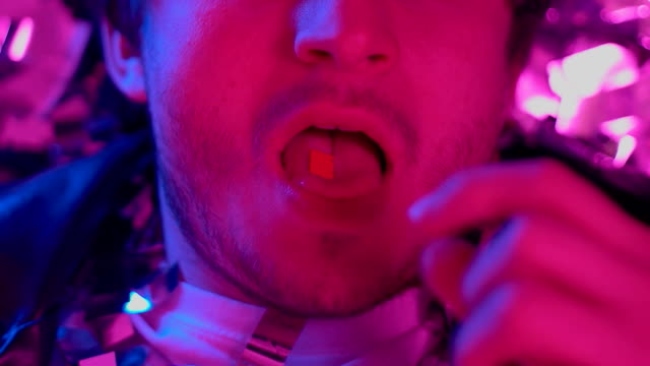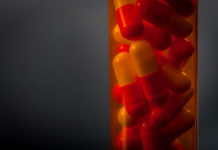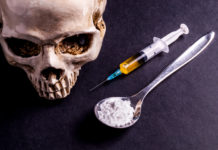Many people want to escape from the realities of their lives, so they turn to hallucinogens for it. Hallucinogens are drugs that alter a person’s feelings, thoughts, and general awareness of their surroundings. These drugs cause hallucinations that seem real, but they aren’t.
The most well-known hallucinogen is acid, or LSD. The term “acid trip” or “dropping acid” refers to its extended mind-altering effects when taken.
What Happens During an Acid Trip?
The specific experience of taking acid will be different for every person depending on the dose they take, their mood, personality, and surroundings. For example, the experience of taking LSD in a group setting will be vastly different from taking it alone at home.
LSD is a quick-acting and long-lasting drug. Symptoms begin as early as 20 to 90 minutes after ingestion, and it can remain in the system for several days. Psychedelic acid trips can last from 6 to 15 hours, with peak hallucinogenic activity occurring 4 to 6 hours after ingestion. The standard dose of 20 micrograms may feel small for some, but can cause a “bad trip” for others.
The active effects of LSD include:
- Visual hallucinations
- Sensory enhancement
- Sensationalized perceptions (“seeing” colors, “tasting” sounds)
- Rapid emotional shifts
- Impaired depth perception
- Changes in the perception of time
- Delusions
- Dissociation
- Anxiety
- Sweating
- Tremors
- Dry mouth
- Increased heart rate
- Increased body temperature
- Panic attacks
- Depression
After several hours of hallucinations, the effects will gradually decrease in intensity until a person gets back to their equilibrium. Then, the body feels very tired and all a person will want to do is sleep. Often, people will experience a post-acid trip “afterglow” wherein visual perception is enhanced. There is also the possibility of vivid dreams and flashbacks for days, months, and even years after the acid trip.
How Long Does LSD Stay in the Body?
Acid trips usually last between 6 to 12 hours. Once the hallucinogenic effects taper off, a person may feel the “afterglow” effects for six more hours. The body may return to its equilibrium within 24 hours of initial ingestion, but this timeframe may be longer for those who take more potent doses.
Traces of LSD are relatively difficult to detect in the body because the liver works quickly to break it down. The average dose is 20 micrograms, and even doubling or tripling that amount doesn’t add up to much at all when screened for testing.
LSD can be detected in the system through different drug tests:
Urine – The liver breaks down acid very quickly, leaving behind less than 1% of the original structure. Most routine drug tests cannot detect LSD any time after use.
Blood – A 2017 study showed that 200 micrograms (ten times the average dose) of LSD was detected in blood samples after 16 hours. For participants given 100 micrograms of LSD, it was detectable after 8 hours.
Hair follicles – There is currently no reliable data available regarding hair follicle testing to detect LSD.
Post-mortem – Researchers have found evidence of LSD in brain tissue samples during autopsy. The hallucinogen was not the cause of death in these cases.
What is LSD?
Lysergic acid diethylamide (LSD) is a psychedelic hallucinogen made from lysergic acid, which is found in a fungus that grows on grains such as rye and other grasses. It is a white, odorless material commonly taken through blotter paper absorbed on the tongue, or through tablets and droplets. Common names include acid, blotter acid, mellow yellow, or dots.
LSD’s psychoactive properties were first discovered by accident in the 1940s. Dr. Albert Hofmann’s fingertips came in contact with some LSD crystals, and they were absorbed into his skin. Some time later, he began to feel dizzy and restless, experiencing “a not unpleasant intoxicated-like condition, characterized by an extremely stimulated imagination.”

Today, LSD is classified as a Schedule I drug, which is the most criminalized category for drugs. This classification is defined as “drugs, substances, or chemicals with no currently accepted medical use and a high potential for abuse.” Other Schedule I drugs include heroin, marijuana, methaqualone, and ecstasy.
Very small doses of LSD (20 micrograms) are needed to trigger an acid trip.This is enough for the hallucinogen to produce changes in emotions, perception, and a person’s sense of time and space. One dose can last several hours, and the effects vary widely, depending on a person’s body composition, weight, and other biological factors. High doses of LSD can cause severe physical and psychological effects.
Side Effects of LSD
People use hallucinogens like LSD for the euphoric feeling of being on an acid trip. The seemingly real sights, sounds, and revelations that occur after an LSD dose can feel so far removed from daily life. Regular use of LSD can lead to physical tolerance and psychological dependence on the drug, and there is great potential for severe side effects.
Developing LSD Tolerance
Some people enjoy the effects of LSD so much that they end up taking it as often as possible. They enjoy the exaggerated surroundings and want to experience further emotional and psychological breakthroughs caused by an acid trip. Unfortunately, LSD tolerance can develop very quickly. If it is taken for three consecutive days, the body will not react at all on the third day. For users who abuse LSD regularly, they must take higher doses to achieve similar effects surpassing their first time.
As the LSD dose increases, there is a greater risk for a “bad trip.” Instead of intensifying positive feelings of euphoria and hallucinations of bright colors, bad trips elevate feelings of fear, pain, insecurity, and paranoia. Hallucinations typically tame in a regular acid trip, can bring a heavy psychological effect during bad trips. Bad trips can last for several hours, and the negative feelings evoked are very overwhelming, seemingly never to leave while a person is intoxicated..
LSD addiction is often developed psychologically. People become addicted to the intense euphoria they experience during an acid trip, and they continuously seek out that feeling. Psychological addiction is much more likely if people take LSD during group activities such as parties or concerts. The exhilaration and excitement are much more compelling if experienced within a group. The experience of a group high can lead to physical dependence and substance abuse.
Long-Term Effects of LSD
People with addictive personalities and a genetic predisposition to substance abuse are much more likely to become attached to the use of hallucinogens like LSD. While LSD does not have the toxic effects that other Schedule I drugs do, it can still be very harmful to a person’s mental health and overall well-being.
The long-term use can lead to hallucinogen persisting perceptual disorder (HPPD), wherein a person can experience persistent flashbacks of the hallucinations they experienced during a previous acid trip. These flashbacks can occur at any time, and they can be very difficult to handle if they happen in the middle of a work or school day. HPPD can also lead to anxiety and debilitating depression.
Conclusion
LSD is one of the most common hallucinogens that people use to escape their daily life, with the euphoric feelings and intense visual hallucinations it induces lasting several hours. When people keep using LSD to seek out this unique and intense experience over and over again, they develop a physical tolerance and psychological dependence on the drug.
An especially debilitating side-effect of long-term LSD use is persistent flashbacks to previous hallucinations that may occur many years after a person’s first acid trip. These flashbacks and euphoric experiences can lead to anxiety, depression, and other mental health issues significantly affecting a person’s daily life.
Sources:
https://www.dea.gov/drug-information/drug-scheduling
















